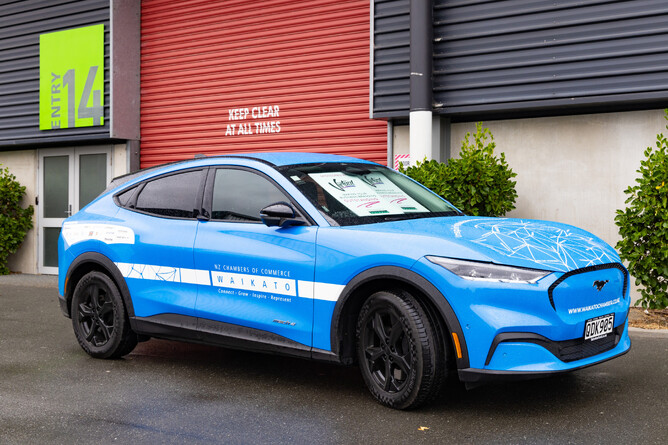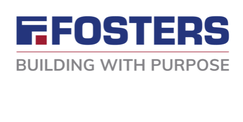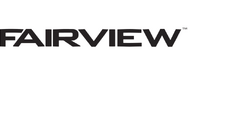By Waikato Chamber CEO, Don Good
In mid-November last year, the Chamber changed its fleet vehicle from a Ford Ranger diesel ute, the biggest selling vehicle in NZ, to a 2023 Ford Mustang. No, not the V8 but the Mach-E rear wheel drive version.
Now a fraction under 10,000km later it is time to tell the journey from an oil burner to electricity. There are several layers to this; the car itself, driving an EV, recharging and its associated anxiety, and whether an EV is a suitable business vehicle to buy.
When we picked it up and had the initial lesson on the car, the highly informative Fairview Ford salesperson pointed to the V8 Mustang beside us on the lot and said, “You will be way past the speed limit before that thing will catch you from a standing start.” He was right.
The car itself - what is it like driving a Mustang EV?
As simply a car, it is a joy to drive. It leaves you with a smile.
It is tight, taut, handles like a go kart, accelerates faster than most and is a genuine thrill to drive.
Docile as a commuter, devastating under acceleration, point and shoot through the corners, and quiet. That was my first impression and it never left.
The quiet part is uncanny and at first something was missing. Having had decades of motor noise to accompany our driving, to have the just the sound of the tyres and the wind as your aural companion, was unnerving, but after a couple of hundred kilometres it was an undeniable pleasure.
Ford engineers can take a bow. The car is quiet, no rattles, no squeaks, no exhaust note. In thinking about it, the sound of the engine in all my internal combustion engine (ICE) vehicles disguised a lot of rattles. To attain this level of silence, the design work and the build quality has to be close to perfect. After 10,000km of driving over all surfaces, there were no noises you would associate with bad build quality. It is all wind and tyres.
If you have to stop, it is instant. The big disks on all four wheels come with an outstanding anti-lock braking system, and if you need to, you just stop.
If you need to overtake, the acceleration is instant. The RWD we have been driving is the least potent of the three major Mustang e-variants, but it is fast. The top of the range GT AWD does 0 to 100kms in 3.4 seconds. Which is Ferrari and Porche territory. Our one in 6.3 seconds, but with 266 horsepower and plenty of torque that is instant (no turbo lag here) and more than enough to overtake safely. The Ranger wouldn’t get close. The majority of the time it drove on sunshine via our solar panels, so the occasional wee burst didn’t hit the bank account.
They have set up the Mustang with three driving modes: whisper, active and untamed. To be fair to the car, driving it in whisper is just as exciting as the other modes. It is not a detuned mode; the other two modes are up tuned. Untamed is to give you a testosterone inducing thrill with a bit of piped exhaust noise, but for everyday use you will probably decide between whisper and active depending on your driving style. That’s not to say we didn’t “give the jandal” on occasion because we did, and it did.
But through the corners it shone. Ford engineers have sorted a really stable platform and immaculate suspension. The low down position of the battery helps the stability like all EVs, but the suspension set up takes it to another level. Ford have got the balance right. Little body roll with none of the jarring suspension you get with a tight set of shock absorbers and a hard suspension set up when travelling over a bumpy road surface.
The Mustang Mach-e will be the standard for the handling of all future EVs and it is a big differentiator to ICE vehicles.
To summarise in terms of performance, it is truly a Mustang but with far better handling and far cheaper to fuel up than the old ICE version.
Range anxiety, re-energising, and batteries
The big question I had was over battery range. The brochures talk about a WLTP of 440 kms which is based on full charge. It is important to realise that figure is the target range achieved using the Worldwide Harmonised Light Vehicle Test Procedure (WLTP). In truth the actual range varies with conditions such as external elements, driving behaviours, vehicle maintenance, and lithium-ion battery age.
For our 10,000km, the range dial at full always settled somewhere between 390 to 415kms. We never ran it dry and had to re-juice from zero. Like most EV users I sat between 20% at worst and ensured that I charged at home to full as much as I could. Most of the time I was commuting 60 to 70km round trip to work, which is what the experts say most NZ vehicles do.
The first long trip was to Tauranga for a meeting with Matt Cowley, the CEO of the Tauranga Chamber. The Kaimais proved to be an eye-opener. Having driven a Ford Sierra Cosworth over the hill back in the 90s I had a benchmark and the Mustang proved to be its equal as much as my memory can recall. So, it was not a trip where we held back to eke out the range. There was no range anxiety on the return, and it was back to home and charging overnight. For several months we home charged. There was no need for anything else based on the commuting.
Into the new year and longer trips were being undertaken and the Chamber team were also using it during the day, so pressure went on the range.
It is here we found its current (pun intended) Achilles heel - the number, locations, refuelling time, and queueing at refuelling/recharging outlets.
The first major outing that caused real angst was a trip Rob and I did up to meet the team at Mercury Bay Business Association. No hassle I thought, there was a charging port in Whitianga. Head up there, charge up whilst we meet, and then journey home that night with a backstop at Tairua. Got it covered…so we thought. It was after State Highway 25A reopening, but we decided to stop in at Tairua for a top up just to be sure. Got there to find a pesky Tesla just starting its charge up so looked at our gauge, looked at the time we were due, and reverted to plan A, push on and charge in Whitianga.
It is when you are under time pressure that most decision-making comes undone. This is where the difference between the petrol/diesel refuelling network and the EV network and the elapsed time it takes to re-charge an EV sinks in.
We headed for Whitianga, and you guessed it, the charging unit there was out of order. There is only one public charging station in Whitianga. After some very kind offers to charge at people’s homes, we decided to head to Tairua after the meeting and chance our luck.
Leaving at 8pm and both of us watching like hawks, the range gauge was under 50%. We arrived in Tairua to two wonderful discoveries. No-one else was at the operating recharging station and we found a superb couple of pizzas at the outstanding Manaia Café and Bar. There the banter was great and the food outstanding for a couple of hungry travellers.
The Mustang re-charged to 80% in just under an hour as they do in public charging stations, and we got the obligatory text from ChargeNet to say we needed to unplug and shift on. We were well fuelled up on excellent food, the Mustang was ready, and we didn’t want to inconvenience other drivers, so Rob and I headed home with no concerns.
As we have spent more time in the Mustang the range anxiety has gone. It is now a thing of the past but for many business people who travel widely for work it will be an issue until the EV re-charge network is as comprehensive and competitive as diesel and petrol.
On top of that, the time it take to re-charge needs to come down from the current 40 to 60 minutes to less than 10 minutes. The new battery technology and charging technology looks promising but the range needs to match the equivalent ICE vehicle, so 600 to 800 kms.
Importantly there needs to be good coffee/cafe next door to every charging point.
Is it a Mustang, yeh nah, absolutely it is!
The petrol head community will never change, despite the Mach-e outperforming the petrol equivalents on almost every measure. For them a Mustang or any other performance car has to sound like a race car.
Funnily enough, aside from the first few weeks, that lack of a throaty growl from a V8 never bothered us. After years of listening to the engine to change gears or to feel the heartbeat rise, we did not miss it.
Instead, we got to enjoy the silence of no engine, smooth surge of power, a bit of tyre road noise and if you are on the Expressway, with its smooth surfaces, as close as you can get to just the wind rushing past.
It was uncanny but enjoyable.
So, is an EV Mustang a suitable business vehicle to buy?
Absolutely! If you enjoy driving a performance vehicle and have an eye on your effect on the planet. Which is where our change to a Mustang began.
When comparing the per passenger emissions of the Ford Ranger with taking the Te Huia train we found that they were more or less equal, based on the early KiwiRail data. We have been benchmarking our carbon footprint and found the diesel ute was a major negative and when Fairview Ford said try a Mustang, who could resist?
The car is a head turner, the team want to drive it, it can go like a cut cat, or dawdle like a docile kitten. The seats are comfortable and secure even on a long journey. It is a comfortable 5 seat, mid-size, sports SUV, with a trunk and a frunk. It handles slow home-based 3-pin plug charging and the fast charging units as well.
It is a far cheaper Mustang to run than its equivalent petrol pony car, and that is before you factor in the lack of maintenance needed.
For me the only negative has been its lack of towing capability, but with a diesel SUV in the family, the boat can still get towed.
However, like all EVs it does make you find a charger near a good coffee café/cart every now and then. If you had a charging unit at the office and/or workplace then life is easy and light on the bank account.
As a country we are moving to a Road User Charges (RUC) based system that ensures all road users are taxed for the use of our roads fairly and is based on vehicle weight. Having had diesel vehicles for over 20 years, there is no problem for me but those transitioning from petrol cars, you will find the online RUC system easy to cope with.
For the Chamber the transition to an EV has been a simple journey, far easier and more satisfying than we expected.
The price of EVs is trending down, the range of models is exploding, especially from China, the range of battery technology is rising, and the performance of EVs is exhilarating. The next five years will see the battle between the ICE crowd and the hydrogen and electric crowd dial up hugely.
Watch this space and try or buy an EV Mustang to see for yourself.
Note: Signwriting on the vehicle provided by the team at Virtual Print.

















